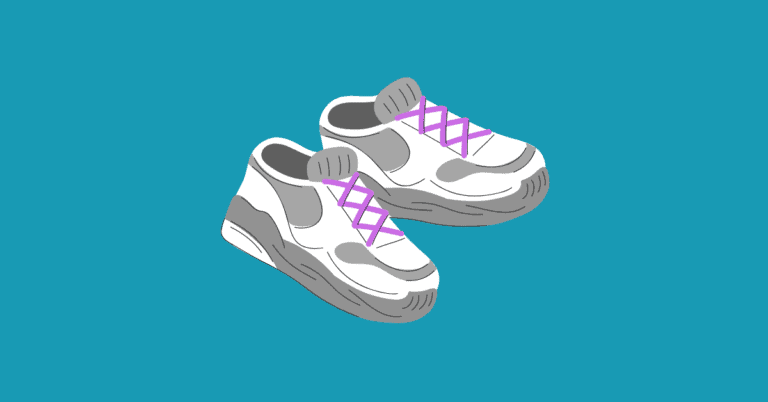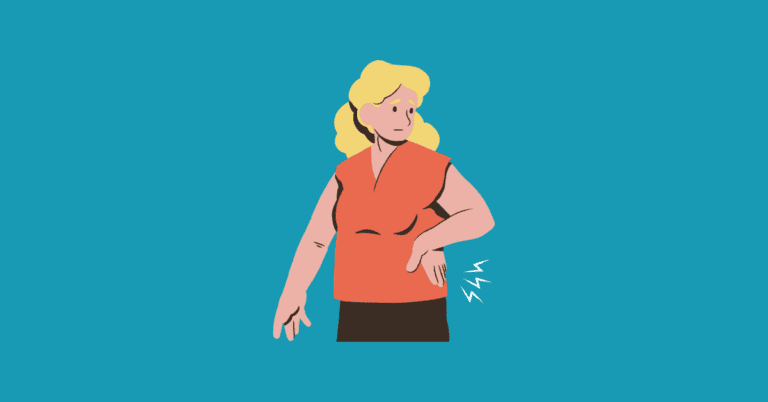Best TENS Unit For Back Pain: 5 Great Options
If you’ve ever undergone physical therapy, you’ve probably come across the term TENS or electrotherapy. The use of transcutaneous electrical nerve stimulation (TENS) is steadily gaining popularity as a tool for pain management during recovery from injuries, surgeries, and chronic pain conditions.
No fluff, just the essential information you need to make an informed decision on the best TENS unit for your back pain.
The Run Down In A Few Words:
- Best user-friendly TENS unit: Oxiline TENS
- Best Wireless TENS unit: WiTouch Pro TENS
- Best affordable TENS unit: iReliev Wired TENS
- Best customizable TENS unit: TENS 7000 2nd Edition
- Best TENS unit for targeting multiple or larger regions of pain: HealthmateForever TENS
How were these TENS units selected?
Back pain is one of the most common referrals in physical therapy, affecting millions of individuals worldwide.
In the majority of cases, recovery from back pain can take about 8-12 weeks, provided adherence to a comprehensive treatment approach. This approach often includes therapeutic exercises like core and hip strengthening, stretches for spinal mobility, activity and ergonomic modifications, behavioral adjustments, and…pain management strategies.
This is where a TENS unit comes in.
Electrical stimulation (e-stim) has various applications, including reducing pain and inflammation, promoting the growth of bone and tendon, facilitating wound healing, aiding in muscle reeducation, and strengthening muscles. TENS is a specific type of electrotherapy, which is used for pain management.
I will be blunt: a TENS unit is not a miracle cure, and used alone, it is likely not going to cure your back pain.
However, when used in conjunction with therapeutic exercises and lifestyle modifications, it can provide effective pain management and promote recovery, allowing individuals to adhere to their exercise regimen and maintain their daily activities, which are essential for chronic pain relief and long-term improvement in back pain.
Based on my clinical knowledge, experience, and user feedback, these five units stand out for their ability to deliver high enough intensity for effectual treatment while maintaining user-friendly features. I also took into account affordability and convenience in the selection process.
What is the best TENS unit for back pain?
The best unit for you really does depend on your needs and priorities.
Below is a summary table of the specifications:

Note that for some of the units, the max intensity is not numerically specified. This is because the perception of intensity can vary between units manufactured by different companies. For instance, 60 mA of intensity on one unit may feel different compared to 60 mA on another unit from a different manufacturer. Consequently, some companies opt not to provide specific numerical values for intensity.
Read on for more details!
1. Oxiline TENS X Pro

Overview
The Oxiline TENS X Pro stands out for its large, touchscreen display, which makes navigation fairly simple and straightforward.
Individuals that have experimented with multiple TENS units in the past often highlight this TENS device for being the most powerful.
It includes a variety of modes including kneading, acupuncture, tapping, cupping, and deep tissue.
Of course, there is no one best mode, you can experiment with different modes and intensity levels to see which provides the best pain relief for you.
Specifications

Top Features
- Very easy to use and effective
- Built in rechargeable battery has a long battery life
- Comes with pads of varying sizes, which is great because it can try different pad configurations. For instance, you can use the larger pads to pinpoint a bigger location
- This is the only TENS machine that includes a lifetime warranty
- Dual channel, which means you can target two different regions at the same time. You can choose different modes and intensity levels for each channel
Considerations
- Touchscreen can be sensitive so if you pick up the control without paying attention, you may change the settings or end up turning it off. If you have this issue, you can choose to temporarily lock the screen while you are using the tens unit
Cost
$ 98.45
2. WiTouch Pro TENS unit for back pain relief by Hollywog
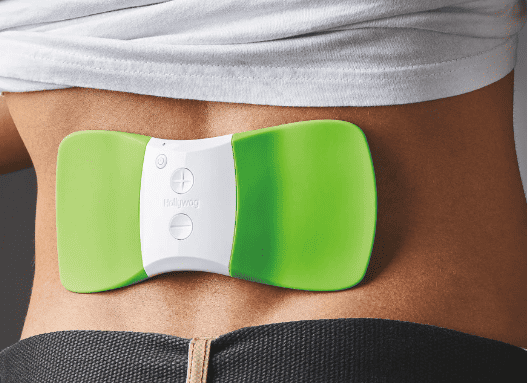
Overview
The WiTouch Pro TENS unit for back pain presents a unique approach compared to the other units on this list. Its wireless design sets it apart, making it fairly convenient and mobility-friendly for users seeking relief from back pain. In other words, it would be very easy to use the unit while you are moving around and about.
Unlike traditional units with separate pads, the WiTouch Pro allows you to stick the unit directly onto the targeted area.
Moreover, this is the only unit that uses smartphone operation. When you purchase the device, you have to download the Witouch app and connect it to your smartphone through your bluetooth.
While you can control the tens unit through the app, you also have the option to control basic functions like powering on/off and intensity using the buttons on the unit itself.
Specifications

Top Features
- Wireless and lightweight, which makes it easy and discrete to use as you are tending to your daily tasks
- 110 mA is a high max intensity, so you have the option to choose from a wide range of intensities (through the 15 different pre-set intensities)
- Includes three pairs of reusable gel pads
- Uses smart phone operation, so you can control all the settings through your phone (I guess this may be a pro for some and a con for others?)
Considerations
- Since it is only one channel, you can only target one region at a time
- Comes with 2 AAA batteries, which aren’t rechargeable. For reference, the energizer batteries are recommended as they tend to last longer. Moreover, you can choose to use rechargeable batteries once you run through the original batteries
Cost
$ 69.95
3. Wired TENS unit pain relief system by iReliev
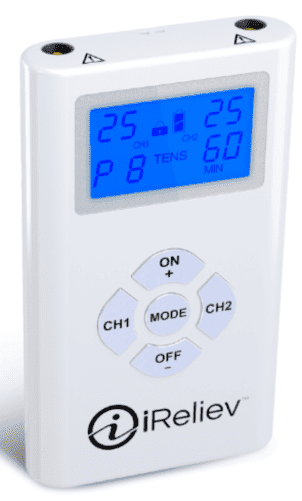
Overview
The wired TENS unit by iReliev is a great affordable option for pain relief.
It comes equipped with many adjustable intensity levels and different pre-set programs such as for acute pain, chronic pain, and arthritis. Like previously mentioned, this doesn’t mean you have to use the chronic pain setting if you are dealing with chronic back pain; you can test out the other settings and see if you find other settings to be more effective for you.
This unit also comes with a belt clip holster, which adds to its portability and you can use it while you are on the go.
Specifications

Top Features
- Very affordable
- Up to 80mA intensity output which gives you a generous intensity range to try out for pain relief (through the 25 different pre-set level of intensity)
- Dual channel, which allows you to simultaneously target two different regions at the same time. You can choose different modes and intensity levels for each channel
- Comes with a 2 year warranty
Considerations
- Comes with 3 AAA batteries, which aren’t rechargeable.However, you can choose to use rechargeable batteries once you run through the original batteries
Cost
$29.95
4. TENS 7000 2nd Edition Digital TENS unit by TENS pros

Overview
The TENS 7000 2nd edition digital TENS unit distinguishes itself from other units on this list because it has less pre-set programs, which allows you greater control over the settings.
For instance, the user starts by selecting one of the five modes—let’s say you pick the normal mode. Then, you get to choose a pulse width ranging from 50 to 300 microseconds (I recommend 100-250 microseconds or higher for TENS). Next, pick your pulse rate from 2 to 150 hz—whether you go low or high, it’s up to you. Finally, set your therapy duration from 0 to 60 minutes.
Some of the modes in the TENS 7000 2nd Edition do come with preselected pulse width or pulse rate.
Additionally, it includes modes where settings like pulse width and intensity automatically shift during the treatment session. The purpose behind this feature is to prevent users from becoming too accustomed to the sensation of TENS by introducing variability in the settings.
Still, it’s worth noting that becoming accustomed to the TENS sensation isn’t necessarily a drawback, as the activation of nerve fibers remains effective. Ultimately, it boils down to user preference – whether you prefer the consistency of specific settings or the experience provided by automatic adjustments during your TENS session.
Specifications

Top Features
- Greater control over certain TENS settings, which allows high level of customizability
- Up to 100 mA intensity is a fairly high intensity, so you have a good range of intensities to try out (through the 8 pre-set intensity levels)
- Dual channel so you have the option to simultaneous target two separate regions
Considerations
- Comes with one 9V battery. However, you can choose to purchase the rechargeable batteries and battery charger with your TENS unit order for an additional $20
Cost
$36.49 (or $56.44 with purchase of rechargeable batteries and battery charger)
5. 2nd Edition YK15RC Rechargeable Pain Relief TENS UNIT by HealthmateForever

Overview
The 2nd Edition YK15RC Rechargeable Pain Relief TENS unit by Healthmate Forever sets itself apart with a unique feature – the capability to utilize 8 electrode pads simultaneously. Although it maintains two independent channels, Channel A and B, each with distinct settings, it has a total of 4 outputs – A1, A2, B1, and B2. Just to clarify, A1 and A2 (or B1 and B2) would have the same settings as they are part of the same channel.
This design offers users the flexibility to target multiple regions or a larger region of pain at once.
Specifications
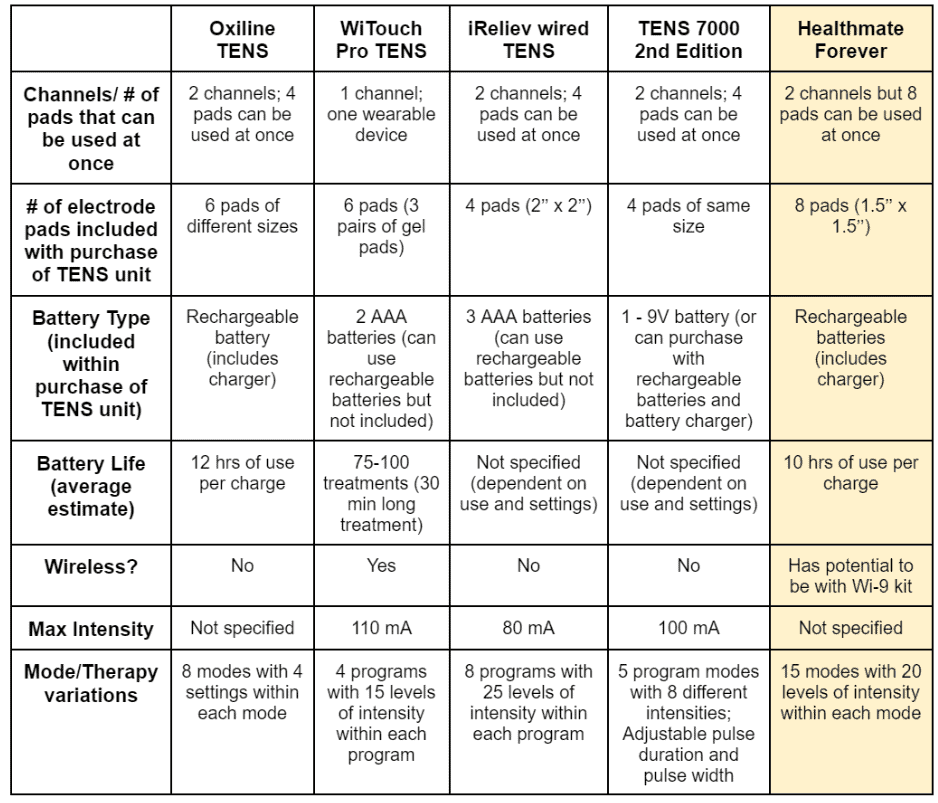
Top Features
- With the ability to use 8 electrode pads at once, you can target a larger region or multiple regions; Dual channel enables the use of two distinct sets of settings simultaneously
- The rechargeable and removable batteries allow up to 10 hours of use per charge, which is an ample amount of time
- Offers many different pre-set modes and intensities
Considerations
- HealthmateForever offers the option to purchase their wireless electrode kit (“Wi9”). This is an additional investment of about $140
Cost
$ 59.99
What is TENS?
TENS, or transcutaneous electrical nerve stimulation, is a commonly used form of electrotherapy aimed at managing pain.
Using adhesive pads placed on the skin, a TENS machine delivers electrical stimulation to regulate nerve signals. Operating through the peripheral nervous system, it engages nerve endings, particularly activating mechanical receptors. These receptors transmit signals to the brain, resulting in a decrease in input from pain receptors and a subsequent reduction in the perception of pain. There are also other proposed mechanisms behind how TENS works. It also helps improve blood circulation to the target area and promotes healing.
TENS is employed in various pain management scenarios, addressing issues such as muscle tension, nerve pain, chronic pain, or post-surgery discomfort. It is often integrated into clinical settings and can be incorporated into therapeutic exercises to aid in pain management and encourage engagement in activities crucial for long-term pain reduction.
What setting should I use on my TENS unit for back pain?
You may have questions about how to use a TENS unit for lower back pain, such as setting and electrode pad placements.
Many TENS units come with preset settings, where you’ll likely need to select a program and then adjust the intensity as needed. While there aren’t many confirmatory studies providing strict guidelines for maximizing the benefits of TENS therapy for individuals,one of the key factors to consider when using TENS is the intensity level.
You’ll want to adjust the intensity to a level where you feel a strong sensory perception, such as a strong buzzing or tingling sensation, without discomfort. If you experience muscle contraction, it’s advisable to lower the intensity to ensure you achieve optimal pain relief.
As for other settings, it is recommended to keep the pulse duration, or pulse width, between 100 to 250 microseconds or higher. Further, frequency or pulse rate is more dependent on the user. Some people prefer the sensation that high frequency TENS offers compared to low frequency TENS, but you can try it out for yourself.
As for duration – TENS units are usually utilized for durations ranging from 15 to 30 minutes per session. The flexibility is noteworthy as you can incorporate it into your schedule multiple times a day. To highlight, there isn’t a rigid restriction on TENS usage, as it’s not linked to addiction.
Is TENS safe?
Yes, TENS is safe so long as you follow the provided instructions and suggestions for when TENS should not be used. Overall, TENS is non-addictive and side effects are rare. In some cases, people have had an allergic reaction to the gel electrode pads, which resolves after disuse.
Since TENS devices are classified as medical devices, manufacturers must adhere to specific FDA guidelines for approval, ensuring regulated distribution.
That said, you should not use a TENS in following regions and cases:
- Abdomen of pregnant women
- Over regions of known or suspected malignant
- Over recently radiated tissue
- Over damaged or broken skin (such as open sores)
- If you have pacemaker or other electronic device implants (such as implanted defibrillator)
- If you are connected to high frequency surgical equipment
- Near or over eyes
- Front of neck region
- Over chest wall
Please be aware that this list is not comprehensive, and it is strongly recommended that users refer to the manual that accompanies their devices for detailed guidelines to ensure the safe and effective use of electrical stimulation for therapeutic purposes.
Also consider talking to a healthcare professional for further guidance if you are unsure.
Will TENS cure my back pain?
TENS alone is not the solution to your back pain. It can be part of a pain management plan within a more comprehensive treatment approach which can include strengthening exercises, stretches for mobility and range of motion, endurance based exercises, functional activity reeducation, and lifestyle modification.
Back pain can be caused by multiple factors, and you have been dealing with persistent back pain, I highly recommend seeking help from a medical professional. They can offer you further guidance or referral to the right professional so you can get the care suitable for your needs.
In summary, while TENS can contribute to effective pain relief, it’s not the sole solution. Rather, consider it a facilitator – a TENS machine empowers you to manage pain, enabling you to partake in daily activities and prescribed exercises. Consistent participation in these exercises forms the cornerstone for achieving lasting, long-term pain relief.
What is the difference between TENS and EMS?
TENS and EMS are often used interchangeably, which can lead to some confusion.
EMS encompasses various therapies utilizing electrical stimulation to induce muscle contraction, aiding in strength gain and addressing a range of physiological needs. While TENS can be considered a form of electrical muscle stimulation within exercise circles, this distinction may be unnecessary for our discussion. Beyond clinical contexts, EMS serves as an umbrella term for techniques that stimulate muscle contraction, promoting not only strength but also tendon growth, improved blood circulation, muscle reeducation, wound healing, and pain and inflammation reduction. Electrode pads are strategically placed over motor points within the target muscle, where nerves converge to initiate muscle contractions. In certain healthcare fields like physical therapy, EMS further divides into specific categories, notably NMES (Neuromuscular Electrical Stimulation) and FES (Functional Electrical Stimulation), each with distinct applications and benefits.
If you’re receiving treatment from a physical therapist for your back pain, there’s a possibility that NMES could be integrated into your routine, contingent on your specific presentation and the physical exams.
NMES primarily aims at promoting strength gain, aiding in muscle recovery, and preventing muscle atrophy. To optimize its effectiveness, individuals undergoing NMES therapy are encouraged to tolerate the highest tolerable amplitude during stimulation. This approach makes intuitive sense: stronger muscle contractions typically yield greater strength benefits.
On the other hand, there are three different types of TENS: sensory level TENS, motor level TENS, and noxious TENS. The primary type of TENS and most applicable to this article is sensory level TENS.
Sensory TENS involves stimulation that doesn’t trigger muscle contractions but rather produces a gentle tingling or buzzing sensation. This approach can serve as an effective pain management strategy for individuals grappling with injuries or chronic pain, seamlessly integrating into daily routines, even during activities.
The intensity of TENS therapy varies from person to person, targeting a moderate tingling or buzzing sensation during application.
It’s important to note that within a few minutes of using TENS, you may experience a decrease in both the perceived intensity of the sensation and your pain levels. This adjustment is entirely normal and signifies your body’s adaptation to the stimulation; As I had mentioned earlier, this doesn’t indicate a decrease in effectiveness as pain management is still being addressed.
Bottomline
All of these TENS units offer solid options when selecting one as part of a pain management plan. Each unit comes with its own unique features and functionalities, catering to different preferences and needs. Remember to follow safety guidelines and consult the accompanying manuals for comprehensive usage instructions, ensuring a secure and effective incorporation of electrical stimulation into your therapeutic routine.
